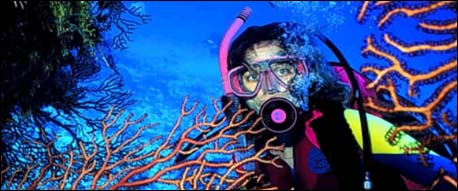
SPONSORED
LINKS
Decompression sickness (Bends)
The single largest risk scuba divers to face is called Decompression Sickness . This is an injury that occurs when a diver ascends too quickly, or dives too deeply for too long. Throughout a dive, the body absorbs nitrogen-an element of air -from breathing compressed air. The deeper a diver descends, the denser the air that is breathed and the more nitrogen absorbed.
This nitrogen forms tiny bubbles in the diver's tissues and bloodstream. If a diver ascends to the surface too quickly, these bubbles remain trapped inside the body and can cause extreme pain in joints and organs. Severe cases of decompression sickness can be fatal. For this reason, all divers attempt to ascend slowly from every dive, to allow excess nitrogen to escape the body gradually. Divers who suspect they are suffering from decompression sickness should seek medical attention immediately.
Divers must also wait at least 12 hours, and sometimes 24 hours, after a dive before flying on a plane. Because air pressure changes rapidly when a plane increases its altitude, flying too soon after diving can result in decompression sickness.
Air Embolism
Another pressure-related injury. It occurs when a diver ascends too rapidly and the gases in the diver's bloodstream form a large bubble. If large enough, the bubble can block the flow of blood to the brain and be fatal. To avoid these injuries, completes the dive by ascending slowly to the surface. Most divers ascend at a rate of 60 ft (18 m) per minute in order to avoid such risks as air embolisms and decompression sickness.
Nitrogen Narcosis
The narcotic effect nitrogen has at increased pressure.
OTHER PAGES
4

|